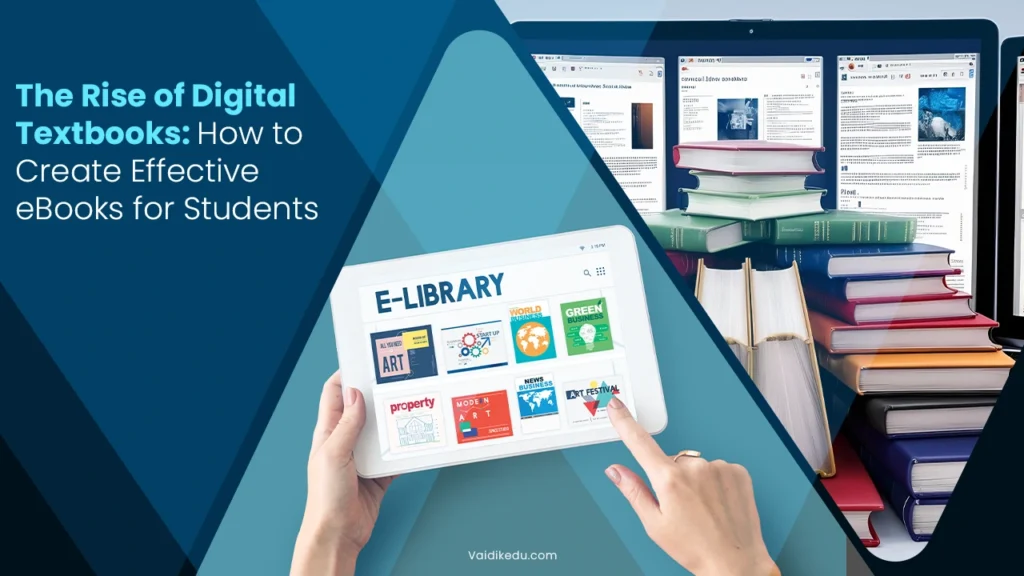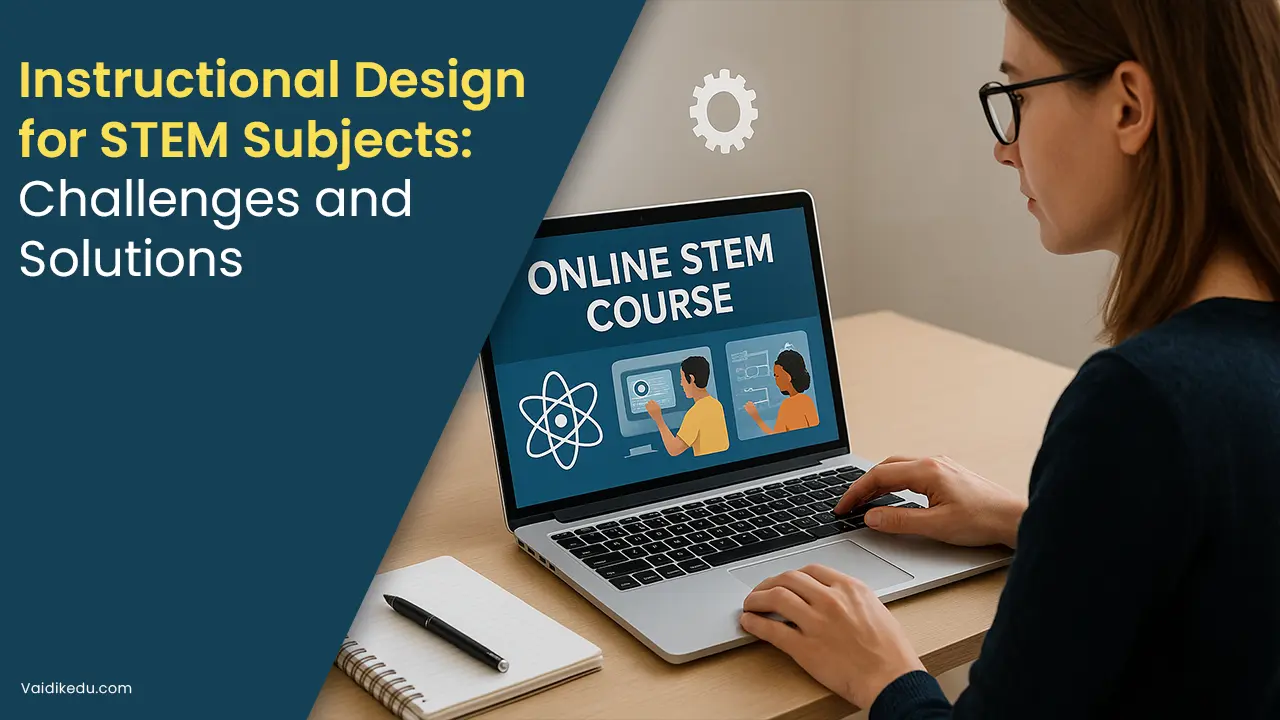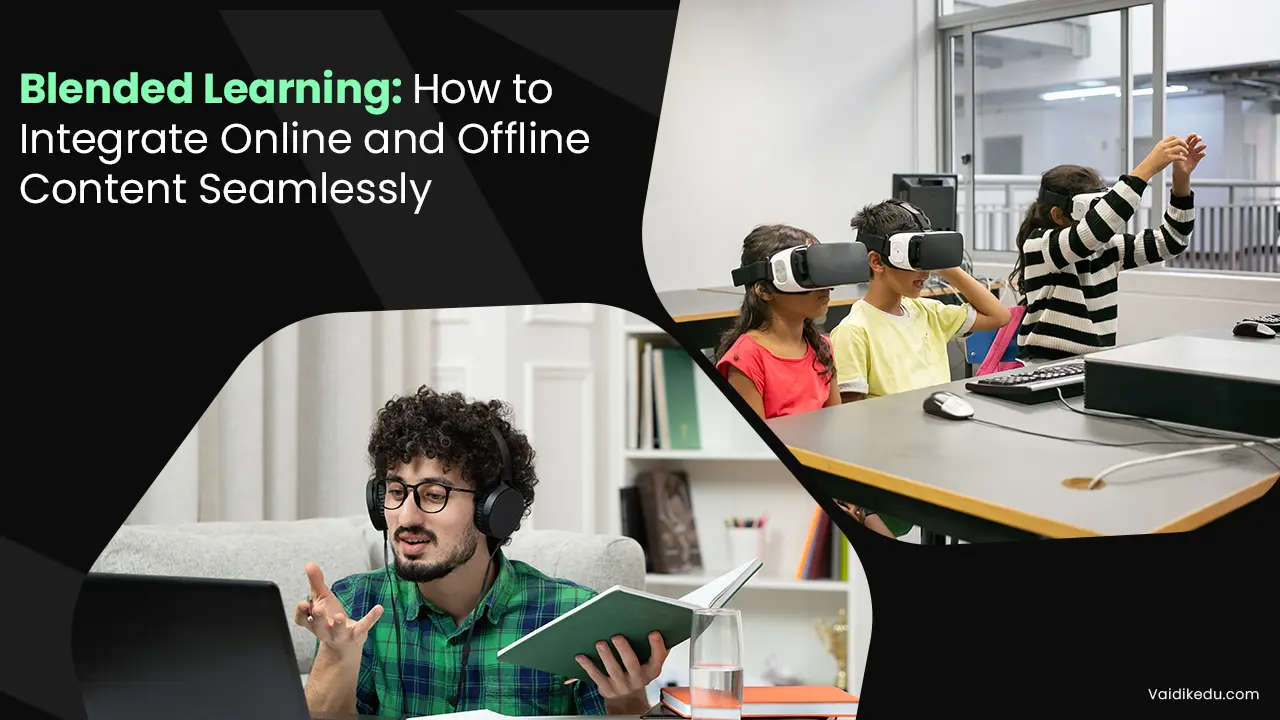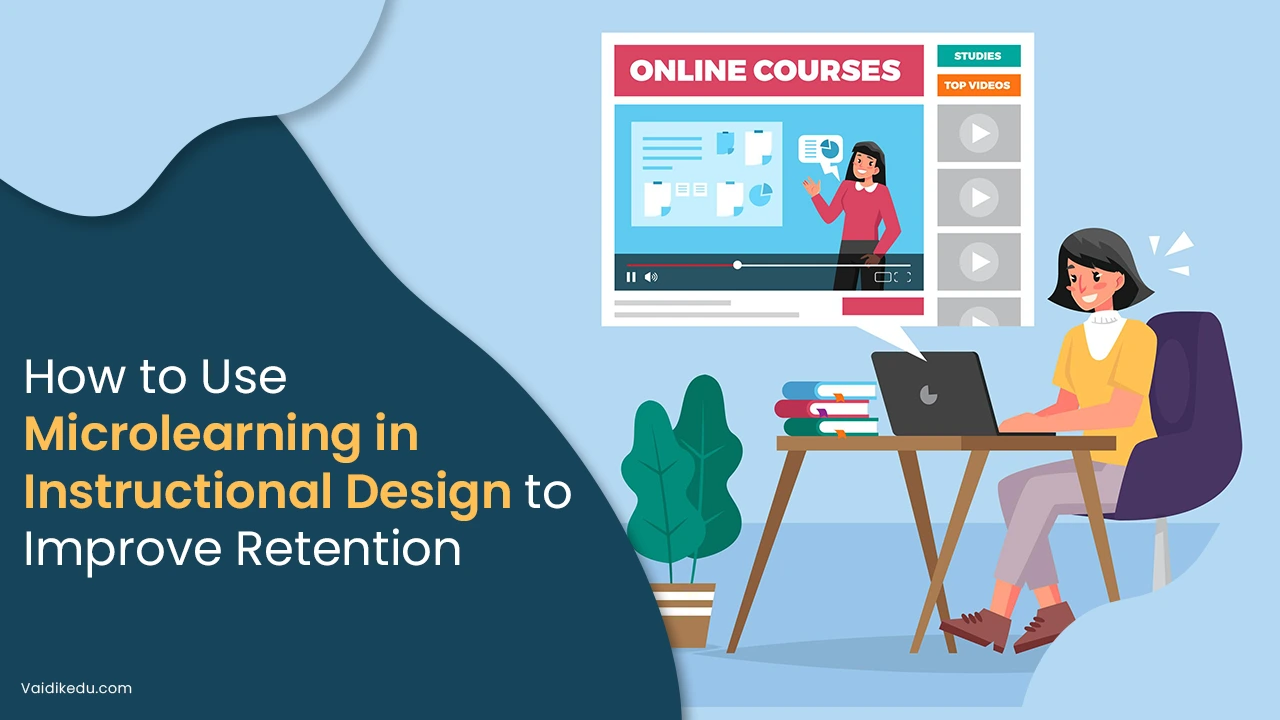Digital textbooks have changed how students access and learn from educational content over the last ten years. This paradigm shift from print books to digital forms owes much to technological advancement, widening internet accessibility, and reducing costs for learning materials.
Ebooks are part and parcel of modern education with the advent of online and remote learning platforms, where students receive the best interactive, engaging, and customizable learning experience.
Digital textbooks have several advantages over their print counterparts. They are cheaper, more portable, and environmentally friendly. Multimedia integration, interactive quizzes, and accessibility options make them more effective for different types of learners.
However, to be effective, the digital textbook must be planned well, content designed thoughtfully, and an understanding of the needs of the students. That is, it’s not about converting a printed book into an electronic one by a publisher, this resource enables deployment of digital tools to facilitate learning has been left out.
This blog shows how one can create excellent ebooks for learners. Whether you are an educator, a content developer or you to better know how best to use principles of design for interactivity, digital and/ or accessible, and digital publishing best practices in informing that eBook to ultimately help maximize your student engagement and your learning outcomes. Understand what are the advantages of digital textbooks:
Before creating, it is important to understand why digital textbooks have become popular among students and educators.
Here Are Some of The Key Benefits:
- Accessibility And Portability
Most devices support digital books, ranging from tablets and laptops to smartphones. Thus, for example, a student can carry five digital books without carrying bulky backpacks. Furthermore, digital books allow access to books at any convenient hour in any convenient place, thereby allowing flexibility in learning.
- Cost-Effectiveness
The expense is quite high in the printing and distribution of physical textbooks. Then the cost of the textbooks is so high and they can become outdated in no time. Digital textbooks are less expensive and easy to upgrade without having to print the books again.
- Interactive Learning Experience
Ebooks are nowadays embedded with videos, animations, quizzes, and hyperlinks, among other features that make a learning environment active. Interactive learning elements help in the internalization of concepts and make learning more lively than static text.
- Adaptation And Personalization
E-books Publishing Services enable students to underline text, take digital notes, change the font, and have read-to-me through text-to-speech features among others. Also, some software allows teachers to customize the materials to suit what they teach and their curriculum, respectively.
- Eco-Friendly And Sustainable
The production and transportation of books can have harmful effects on the environment, whereas digital textbooks produce less paper resulting in more ecological learning practices.
Steps in Making an E- Book Effective For Students
1. Learning Objectives And Target Audience Identification
Define why you want to create your eBook and to whom it will be targeting. Are you offering a textbook to high school students, college students, or adult learners who self-study? You should outline very clear learning objectives that show that your content will be relevant in helping students meet specific educational objectives.
2. Format/Platform Selection
There are a wide range of formats from which you can create digital textbooks:
- PDF (Portable Document Format): Least interactive, widely used
- EPUB (Electronic Publication): Text with reflow and support for multimedia
- MOBI (For Kindle)
- HTML
- Internet-based; interactive content
Choose the platform that supports your required features. The most popular platforms include Kindle Direct Publishing, Apple Books, Google Play Books, and Moodle and Google Classroom for educational tools.
3. Structuring To Maintain Engagement
A well-arranged eBook is better read and retained. Consider the following:
- Use clear headings and subheadings for easy navigation.
- Maintain consistent font styles and sizes for readability.
- Include high-quality images and infographics to support the text.
- Break down content into digestible sections to avoid information overload.
4. Incorporate Multimedia And Interactivity
To make learning more engaging, integrate:
- Videos and animations to explain complex concepts.
- Audio clips for pronunciation or lecture-style narration.
- Interactive quizzes and assessments to test knowledge.
- Hyperlinks to other resources for further reading
5. Make it Accessible And Inclusive
- So that your eBook can be accessed by every student, including those with disabilities
- Image alt text and provide images to those who cannot see
- There must be compatibility with screen readers for text-to-speech
- Multiple languages should be provided if possible.
- High-contrast colors and readable font
6. Allow For Tablet And Mobile Optimization
- Ensure your eBook is compatible with many types of devices: smartphones, tablets, and PCs. Run tests on it with several screen sizes, and format the text accordingly.
7. Implement Navigation Features
Effective navigation enhances usability. Include:
- Clickable Table of Contents for quick access.
- Search Functionality to find keywords or topics.
- bookmarks and annotations for personalized learning.
8. Ensure Content Quality And Accuracy
An effective eBook must be well-researched and free from errors. Before publishing, proofread your content for grammar, spelling, and factual accuracy. Consider peer reviews or expert feedback to validate the material.
9. Publish And Distribute
Once your eBook is ready, select a publishing and distribution channel. Some common channels are:
- Self-publishing sites such as Amazon Kindle, Apple Books, or Google Play Books.
- Share directly through Learning Management Systems, such as Blackboard or Moodle.
- Host it on institutional sites or private student portals.
10. Collect Feedback And Revise
Continuous improvement is the key. After publishing your eBook, collect student and teacher feedback to identify areas for enhancement. Periodically update content to keep it relevant and engaging.
Challenges And Considerations
The more advanced the technology, the more complex and personalized digital textbooks are going to be. Emerging trends such as AI, AR, and VR are also predicted to improve digital learning further.
AI-driven eBooks enable eBook content adaptation to individual needs and provide personalized recommendations and real-time feedback to each student.
The use of AR and VR would also make learning much more immersive since students can interactively explore complex concepts through many simulations.
The other important innovation is the use of adaptive learning technology. Such systems analyze the performance of students and adjust the content accordingly, providing learners with support that is customized to their strengths and weaknesses.
Blockchain technology is also being explored for the secure distribution of digital textbooks, preventing piracy and ensuring that authors receive fair compensation.
Despite their advantages, digital textbooks still pose some challenges. The first point of concern about digital textbooks is screen fatigue, which generally causes eye irritation and decreased focus when exposed for a long period.
To resolve this, there should be features installed in digital textbooks such as dark mode, customizable brightness, and text-to-speech functionality.
Another challenge would be the digital divide and accessibility since not all of the students have dependable access to the internet, or appropriate gadgets to fully enjoy eBooks.
Schools and educational centers will have to reach out to find ways to distribute such digital resources and ensure equitable accessibility to allow learning through the modernization process.
Digital textbooks are continuously changing the face of education, making it more attractive, accessible, and practical.
Conclusion
Digital textbooks have transformed education. Learning is now more accessible, engaging, and cost-effective. However, the development of an effective eBook requires much more than the digitization of a printed textbook. It requires thoughtful design, interactive features, accessibility considerations, and high-quality content.
Best practices in eBook development such as predefined learning objectives, choosing the format, the inclusion of multimedia elements, accessibility, and optimization for multiple devices can help educationalists/authors produce texts that enhance student learning better.
Technological advancement has been making an even more impactful role for digital textbooks in schools. Adopting this change along with new tool usage will also make the education process more active and personalized around the globe for students.
Frequently Asked Questions
The best format for a digital textbook is EPUB since it allows reflowable text and multimedia, but PDF is used in many cases with simple, static content, while HTML5 works well for very interactive eBooks.
Use alternative text for images, ensure compatibility for text-to-speech, use readable fonts, and keep the contrast level high for better readability.
You can sell your eBook on Amazon Kindle, Apple Books, Google Play Books, Learning Management Systems like Moodle and Blackboard, or even put it up on institutional websites.
Avoid a cluttered layout, too much multimedia that makes it slow to load, bad navigation, not accessible, and the content is old or not verified.
Hence, with all these considerations in mind, you can create digital textbooks that help students learn better and provide a seamless educational experience.









